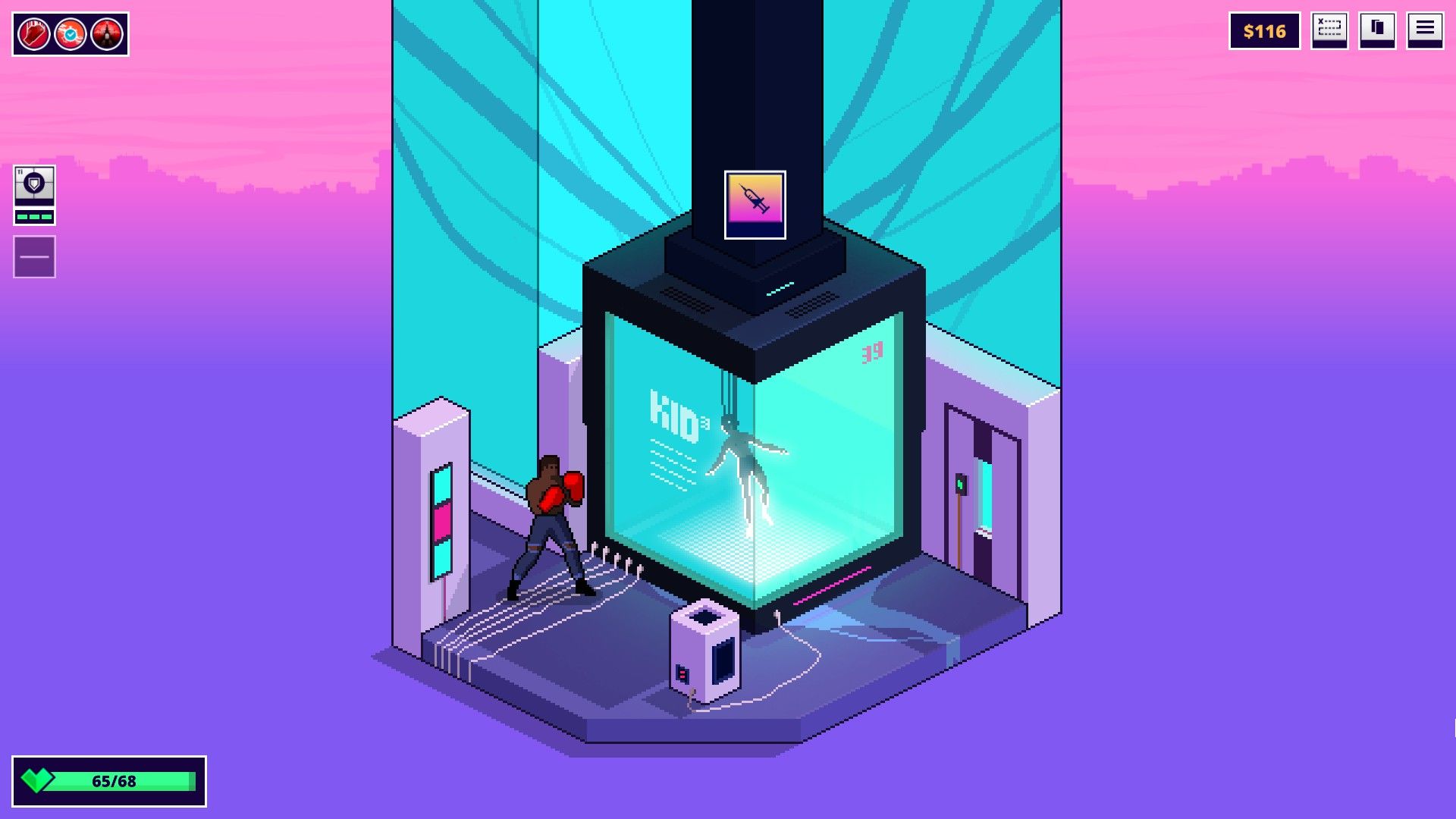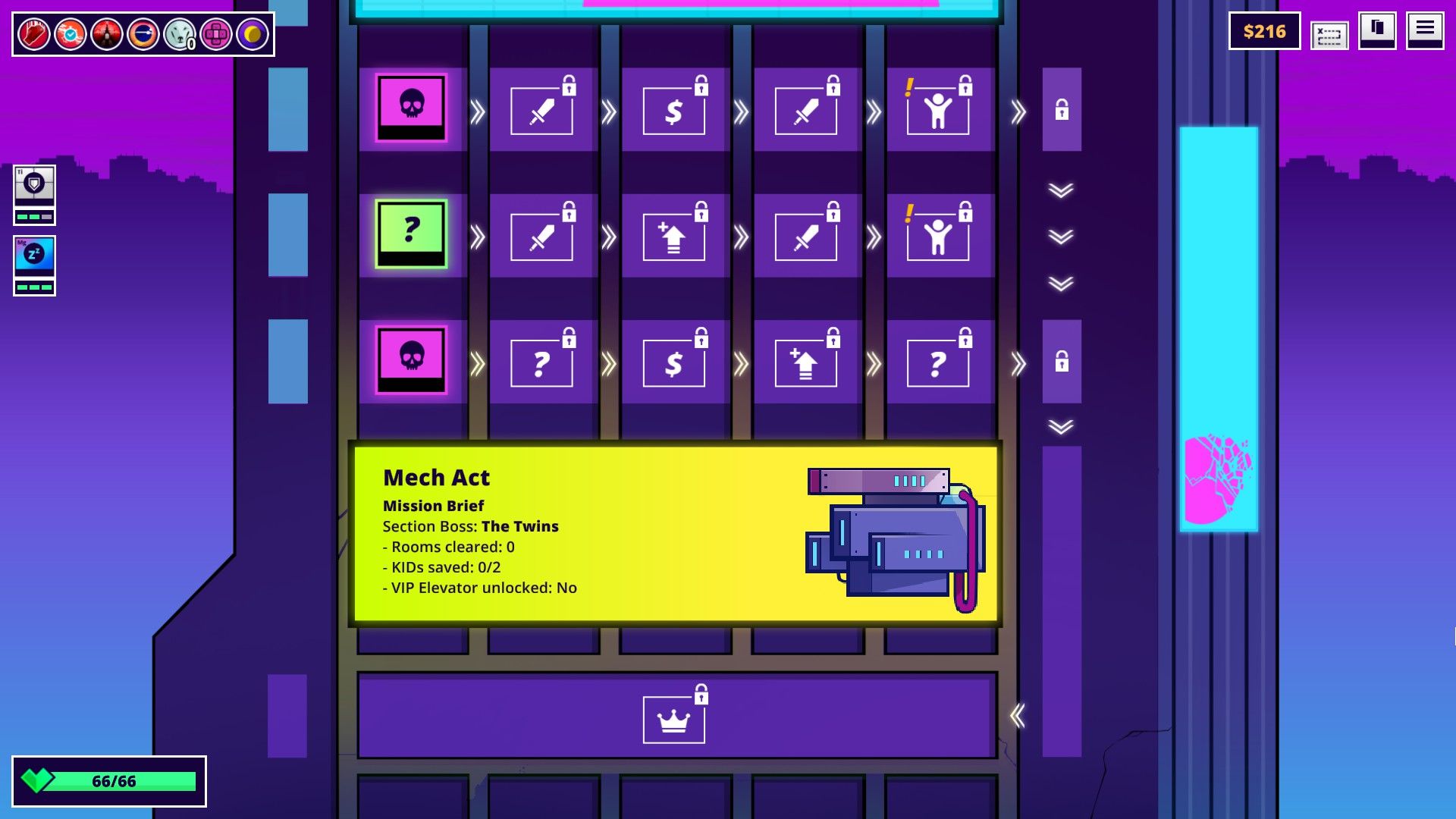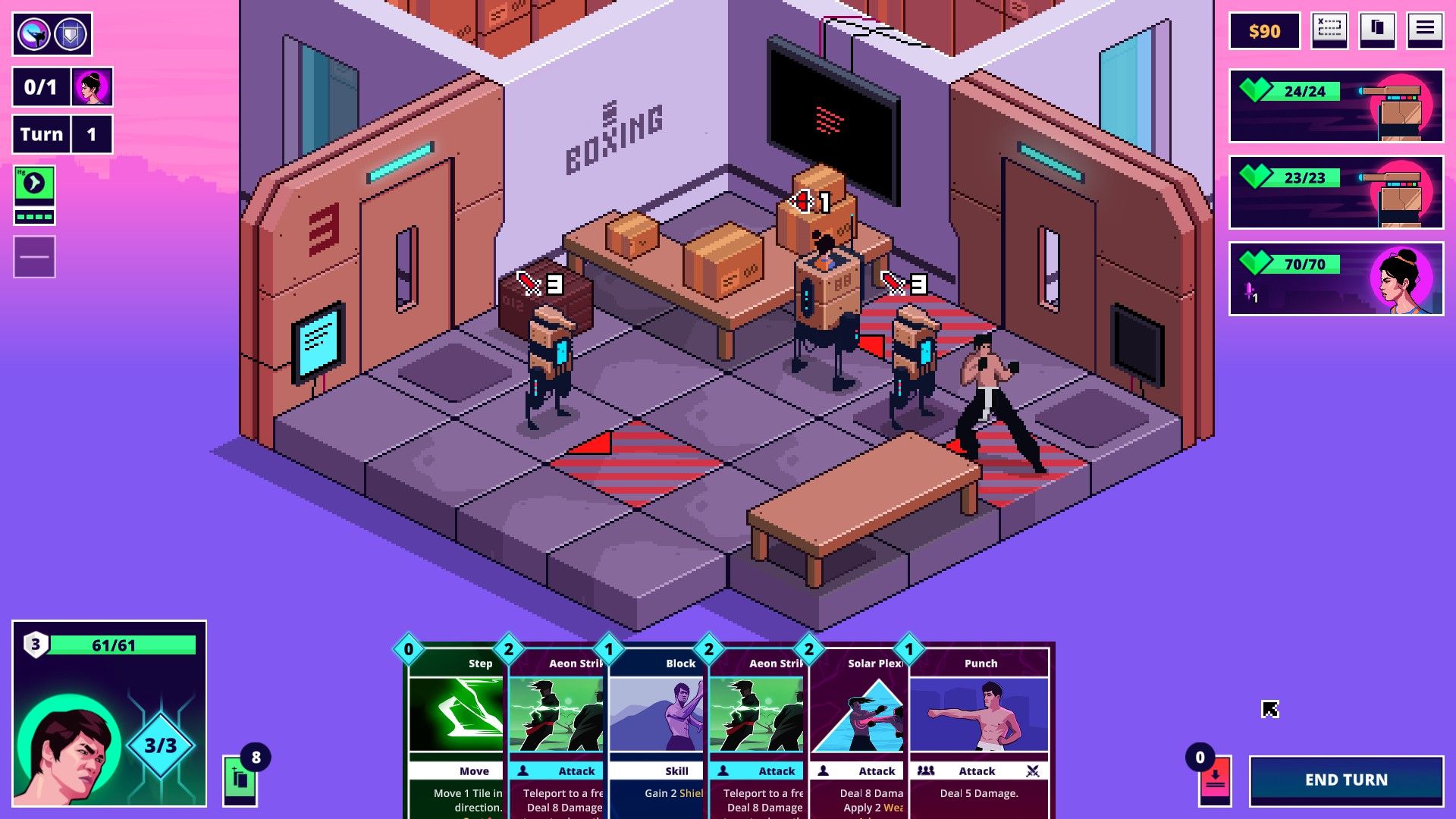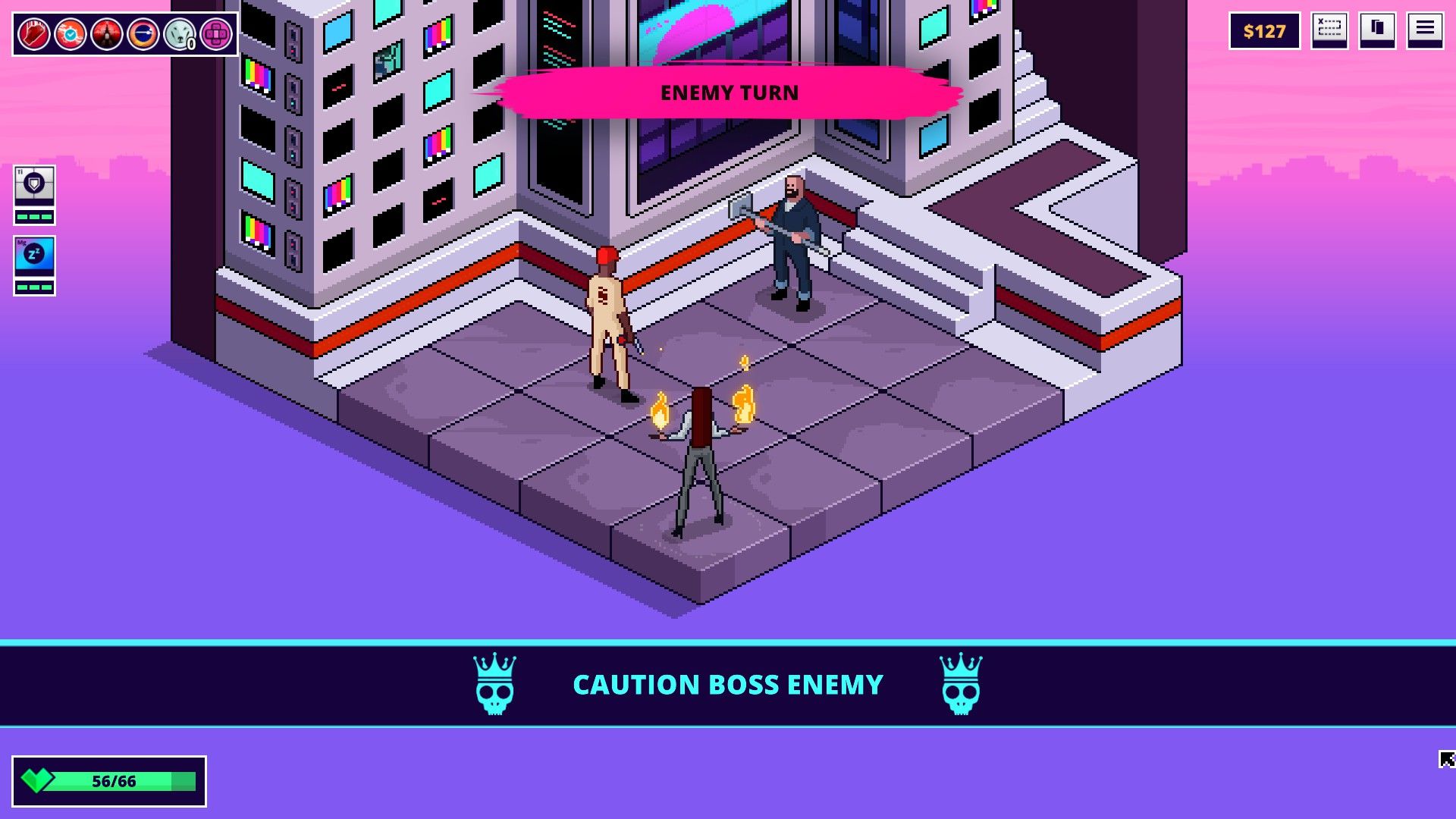Nitro Kid Review: Shotguns and Synthesizers
An '80s-inspired deck builder with killer combat

It's always interesting to watch a new subgenre evolve. In the years following the release of Slay the Spire, we saw many new deck builder titles hit the market. The earliest attempts were naked copies by bandwagon jumpers, but as time has passed, developers have been taking deck building mechanics in interesting new directions.
Such is the case with Nitro Kid, a turn-based strategy game that fuses the deck building of Slay the Spire with the strategy of Into the Breach and Card Hunter and then douses the whole thing in neon. It's a desperate fight through a corporate megastructure swarming with robots, mutants, and gun-toting yuppies. It's an '80s action B-movie with collectible cards - an unlikely combination, but an interesting one.

The story behind Nitro Kid is straightforward enough. As one of three agents of a mysterious organization called CINDER, you are tasked with infiltrating the headquarters of the mysterious INFINITY corporation and rescuing test subjects known as "Kids." This company became the world's biggest by cornering the market on the mysterious substance known as Nitro, to which the Kids have a mysterious link.
You may have noticed that the word "mysterious" appeared a lot in that paragraph. That's because Nitro Kid didn't just take inspiration from Slay the Spire's mechanics - it took the storytelling elements as well. In much the same way that Slay the Spire intentionally obfuscated many elements of its story (such as Neow's intentions and the nature of the Spire), Nitro Kid keeps much of the plot vague. Understanding what's going on means picking up little clues from events, files unlocked by beating bosses, and even background elements in some areas.
You might never manage to put all the pieces together. On the plus side, there are lots of things to punch while you're working on that.

Every run of Nitro Kid starts by selecting an agent. Initially, only one is available - the obligatory Bruce Lee analog L33, a highly mobile martial artist. In short order, the player will unlock two more agents with unique mechanics - J4X, a tanky heavyweight boxer who prefers to fight in the thick of things, and K31, a Trinity-like ranged weapons expert who can swap between firearms with different attributes.
Each of the three characters has a unique set of cards with very little crossover between the sets. The player can earn new cards through winning fights, during random events or by purchasing them in stores. Each character has several viable builds depending on the cards received as well as the agent's patches - permanent upgrades that bestow various perks, from healing to added damage to the ability to play more cards per turn.
Using that deck and those patches, the player must fight their way from the top floor of INFINITY tower to the bottom. Each run is split into three acts with randomized rooms - standard fights, more difficult elite fights which yield patches, shops where one can buy cards or remove them from the deck, and a precious few rest spaces that offer a choice between healing or upgrading a card. The goal is to rescue the two Kids confined in each area, reach a VIP elevator and then fight a boss - one of three for each area.
All of this may sound very familiar, but hold on - we're getting to the interesting part.

Combat in Nitro Kid is grid-based and turn-based. At the beginning of each round, the player draws a hand of cards, including a single guaranteed movement card. As this is happening, the enemies declare their own pending attacks which they will execute at the end of the round. They all want to kill you, of course, but they are kind enough to show you exactly where they plan to shoot in advance.
Unlike the plot, there are no mysteries in combat. With foreknowledge of what's coming, the player is poised to evade or counter any incoming attacks. With careful planning, one can even get enemies to attack each other. This isn't easily done as most enemies have some capacity to react to your own moves and attacks, but it's very satisfying when it happens.
Combat is all about positioning - he who gets shot the least tends to win. But with only a single guaranteed move per round (a card that, incidentally, gets more expensive to play if you don't use it immediately), relocating isn't easy. This is especially true against the bosses, most of who have gimmicks that prevent the player from fighting a straight damage race. Winning means setting up the best moves and then hoping that the random number generator likes you.

Having said all that, let's now discuss the ways in which Nitro Kid improved on Slay the Spire. Really, if you're going to release a game that's so similar to a genre-defining title, you should fix their mistakes.
Slay the Spire is perhaps not the easiest game to jump right into, and Nitro Kid does a few things that make that first few runs less painful. Each run begins by letting the player draw from a selection of rare cards, followed by a guaranteed shop tile. This lets the player start to develop a build right away, so you're less likely to drag around a useless card for half the game waiting for the other half of a combo to show up. The agent is healed after bosses so there's no more starting an act half-dead, and the random event tiles feel a lot less punitive.
But the big draw here is going to be the strategic combat. Slay the Spire is almost an exercise in pure deck building, which can make it feel like one is living at the whim of the RNG. But Nitro Kid is more about combat - one can often overcome a bad deck with good strategy.
During my first run as K31, I limped into the third boss fight with a very subpar deck. I had spent most of the game trying desperately not to die, and I figured that I stood no chance against Totally Not Poison Ivy. But with some very careful resource management, I was able to eke out a win by the skin of my teeth.
If this is where deck builders are going, I think we're going to be fine.
